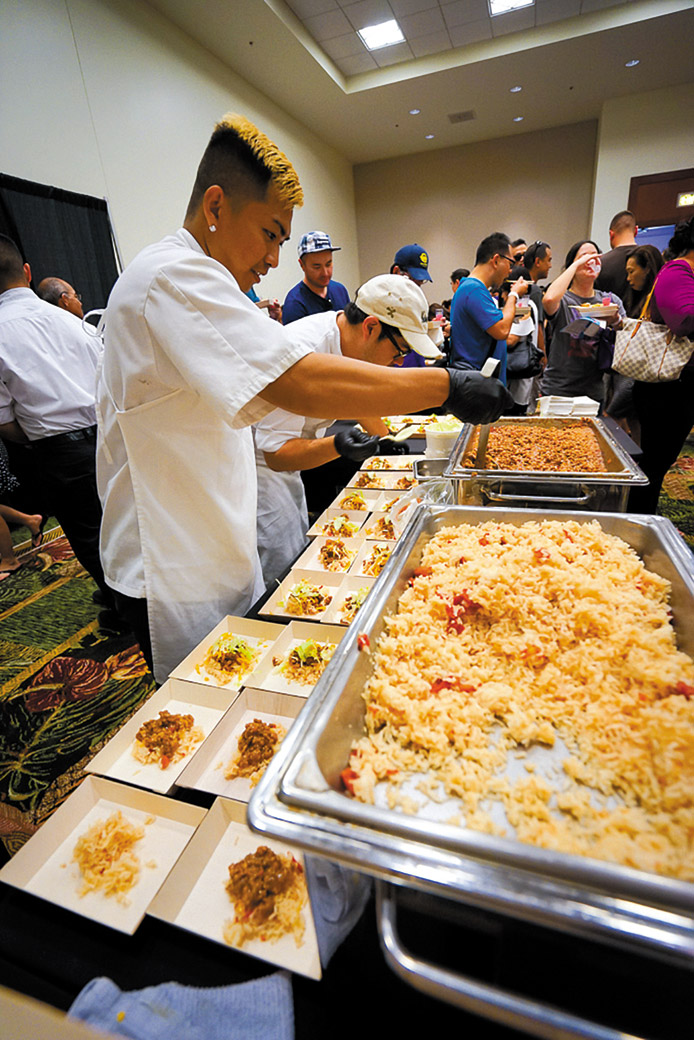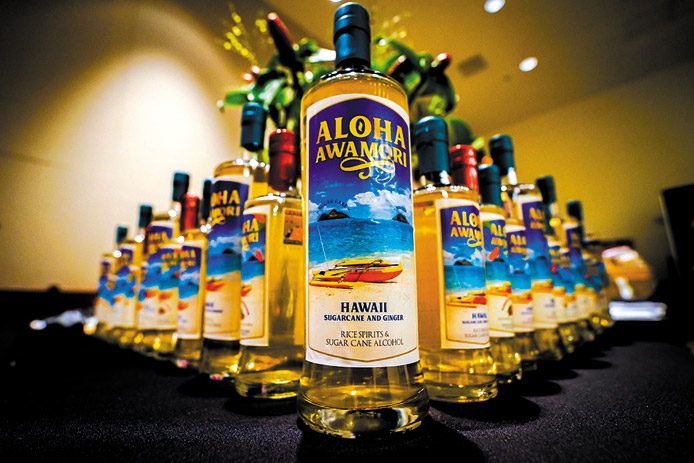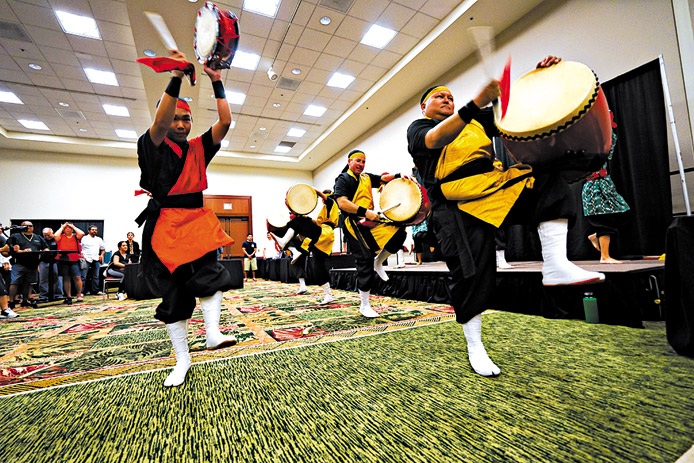In the many villages in Okinawa, awamori is the lifeblood and driving force that sustains and enriches the community.
What is awamori exactly? An alcoholic beverage native to Okinawa, it has been a part of Okinawan culture dating back to the 15th century, and was a predecessor to shochu that, generations ago, was reserved strictly for royalty. The iconic liquor is distilled from rice using a traditional process and typically results in the beverage boasting a 30-60 proof (15-30 percent alcohol by volume) potency. Awamori gets it name from the “awa,” or bubbles, that appear during the distillation process and “mori,” the swelling of those bubbles that occurs as alcohol is produced.
Similar to the exclusivity and regionality of Champagne, which is produced in the distinct Champagne region of France, Japanese law mandates that all awamori must be made in Okinawa. Today, there are only 47 distilleries crafting this distinct beverage.
“Awamori is not just a beverage, or a drink, it’s a living history of the people and culture of Okinawa,” Kuba says. “Aloha Awamori is about our island lifestyle, the culture of our homeland Okinawa and the vibrant traditions of Hawaii. In the awamori experience, people come first, and it’s the interaction that is important.”
Most awamori distilleries are co-op based, meaning many people dedicate their time and talent to take responsibility for operating the distillery. The villagers in Okinawa take great pride and instill cultural practices while making awamori. One such cultural practice is termed “Kaizen,” which means a collective improvement by everyone involved, everywhere, at every moment.
Appropriately, everyone linked to the process contributes to the production of awamori — the elderly put labels on bottles, while the younger generation does the heavy labor in the lifestyle of “yuimaru,” the spirit of cooperation. At the completion of a workday, rice farmers, fisherman and craftsman make their last stop at the awamori distillery and converge to give a “karii,” or toast, to celebrate before the shipment of awamori is exported for distribution.
Awamori is also utilized in cooking, and many of the top chefs in Hawaii will be preparing their signature dishes and pairing them with varieties of awamori at “Karii! An Awamori Experience” scheduled for Friday, Aug. 30, at the Hawaii Convention Center’s fourth floor in conjunction with the Okinawan Festival presented by the Hawaii United Okinawa Association.
For more information, and to purchase tickets ($125 each), visit hnltix. com/events/Karii-An-Awamori-Experience-8-30-2019. For more about Aloha Awamori, go to alohaawamori.com.
A ‘TOAST’ TO GREAT TASTE
Aloha Awamori is a collaboration between the two island locations, Hawaii and Okinawa. Through the partnership, Okinawa makes the awamori, ships it to Hawaii, and owner and founder Randy Kuba refines it, blends it with local ingredients, and bottles it with “a lot of love and aloha.” The alluring beverage is accented with a host of flavors and infusions, including Aloha Awamori’s Kuba varieties such as Chili Pepper Awamori, Sugar Cane and Ginger Awamori and 3-Year Kiawe Wood that is aged and conditioned with the distinctly flavorful wood and charcoal. PHOTOS COURTESY KARII! AN AWAMORI EXPERIENCE
AWESOME AWAMORI
Awamori will be available from multiple purveyors at the Karii! An Awamori Experience event, and the drink will be coupled with creations from participating restaurants and chefs including: Roy’s Hawaii Kai; MW Restaurant; Pig and the Lady; 53 by the Sea; Mariposa; Viaggio; Halekulani; Tango Contemporary Cafe; Chef Ed Kenney of Mud Hen Water; Chef Jon Matsubara of Feast; Chef Chai Chaowasaree; and Chef Jason Takemura of Creations in Catering.
DRUMMING UP THRILLS
In addition to food and awamori beverages, the event will include exciting performances.
See more articles from: Hawaii Convention Center





